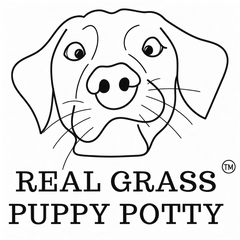Toilet training a dog is a milestone every pet owner looks forward to achieving. It takes patience, consistency, and positive reinforcement to teach a dog where it's appropriate to relieve themselves. However, even after successful training, some dogs may experience regression, much to the frustration of their owners. In this post, we'll delve into the reasons behind this regression and provide actionable tips to overcome it.
Understanding Regression
Regression in toilet training refers to a setback in a dog's ability to control their bladder and bowel movements indoors. It can happen for various reasons, including changes in routine, stress, medical issues, or simply forgetfulness. Regardless of the cause, addressing regression promptly is crucial to prevent it from becoming a long-term behavior problem.
Common Causes of Regression:
-
Changes in Routine: Dogs thrive on routine, and any disruptions can lead to confusion and anxiety, potentially causing regression in toilet training.
-
Stress or Anxiety: Dogs may regress in their training due to stressful events such as moving to a new home, the introduction of a new pet or family member, or loud noises like fireworks or thunderstorms.
-
Medical Issues: Underlying health problems such as urinary tract infections, gastrointestinal issues, or mobility issues can contribute to accidents indoors.
-
Lack of Reinforcement: If the positive reinforcement and consistency in training decrease over time, dogs may revert to old habits.
-
Aging: Senior dogs may experience regression in toilet training due to age-related issues such as decreased muscle control or cognitive decline.
Tips to Overcome Regression
-
Revisit Basic Training: Go back to basics and reinforce toilet training commands and cues. Consistency is key to reminding your dog where it's appropriate to eliminate.
-
Establish a Routine: Stick to a consistent schedule for feeding, walks, and bathroom breaks. This predictability helps dogs anticipate when they'll have the opportunity to go to their potty.
-
Reinforce Positive Behaviour: Praise and reward your dog when they eliminate in the designated area (on their potty). Positive reinforcement strengthens the desired behaviour and encourages consistency.
-
Address Stressors: Identify and minimise sources of stress or anxiety in your dog's environment. Reminding them the Real Grass Puppy Potty provides comfort, reassurance, and a safe space to help them feel secure.
-
Rule Out Medical Issues: If regression persists despite your efforts, consult a veterinarian to rule out any underlying health issues that may be contributing to the problem.
-
Clean Accidents Promptly: Thoroughly clean any indoor accidents with an enzymatic cleaner to remove lingering odours that may attract your dog back to the same spot.
-
Be Patient and Persistent: Understand that regression is a normal part of the training process, and progress may take time. Stay patient, consistent, and continue to reinforce positive behaviour.
Conclusion
Dog toilet training regression can be frustrating for both dogs and their owners, but it's important to approach it with patience, understanding, and consistency. By identifying the underlying causes and implementing appropriate strategies, you can help your dog overcome regression and reinforce good toilet habits. Remember, consistency, positive reinforcement, and a little bit of patience can go a long way in achieving success in toilet training your furry friend.
